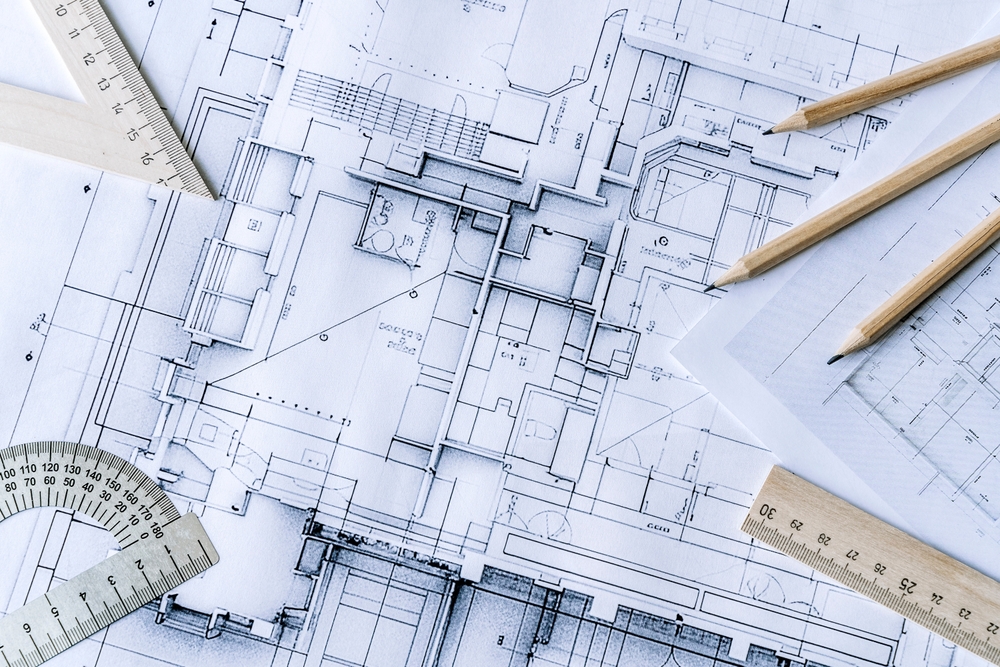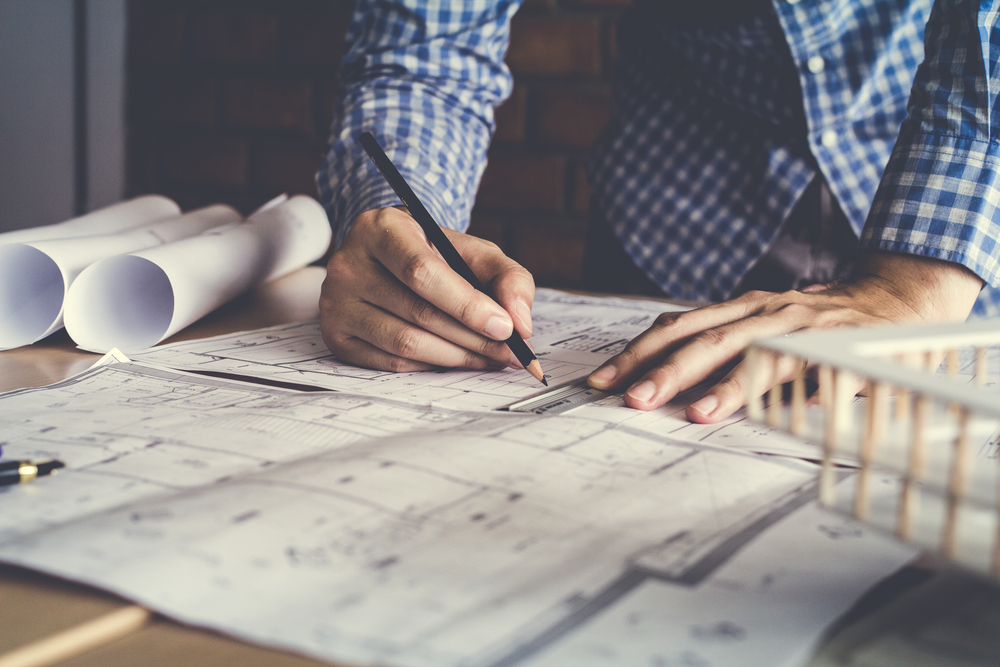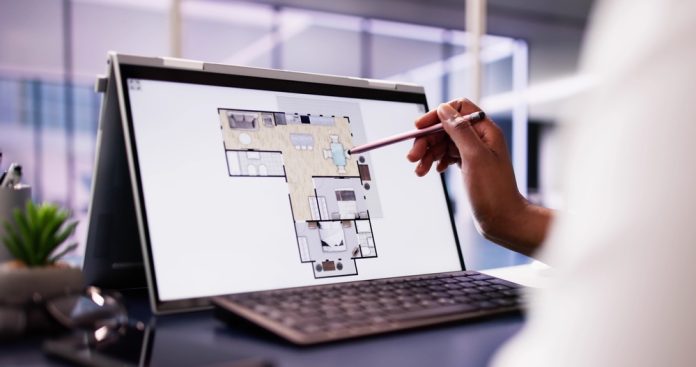So, you’re thinking about building your own home. Congratulations! You’re about to embark on a thrilling, nerve-wracking, potentially wallet-draining journey. It’s like picking out a tattoo—except this one comes with property taxes and a mortgage. And unlike a tattoo, you can’t just laser this decision away if you have regrets.
There’s something deeply satisfying about envisioning your dream home—imagining where the kitchen island will go, picturing lazy Sundays in the perfect reading nook, and planning the massive garage where you swear you’ll finally start that DIY project. But reality check: a dream home only stays dreamy if you’ve thought through all the details. Otherwise, you might find yourself dealing with awkward layouts, costly mistakes, and a sudden urge to list your house before it’s even finished. 
The right house plan can make your life easy and comfortable. The wrong one? Well, let’s just say you don’t want to realize halfway through construction that your dream home is actually a logistical nightmare—like putting the laundry room three flights of stairs away from your bedroom or forgetting that windows exist and turning your home into a cave.
This is why a well-thought-out plan isn’t just about aesthetics—it’s about functionality, efficiency, and long-term comfort. Before you dive headfirst into blueprints and floor plans, let’s talk about what you should consider, the common mistakes to avoid, and how to set yourself up for success. Because trust me, future-you will be grateful that present-you took the time to get this right.
1. Understanding Your Needs & Lifestyle
First things first—how do you actually live? Not in the idealistic, HGTV-inspired, “I’ll host dinner parties every weekend” kind of way, but in the real, “I need space to hide from my kids” way.
Take a moment to evaluate your daily routine. Do you wake up and immediately need coffee before interacting with another human? If so, maybe a coffee nook close to your bedroom is worth considering. Are you someone who works from home but also needs a separate space to decompress? A dual-purpose office with built-in shelving might be ideal.
Consider this:
- How many bedrooms and bathrooms you actually need – not just what looks impressive on paper. If you have three kids now, will they all want their own rooms in a few years? Do you plan to host guests often, or is that spare bedroom going to turn into a makeshift storage closet?
- If you’ll need a home office, workout space, or a dedicated room for the ever-growing mountain of Amazon boxes. Let’s be honest—our online shopping habits aren’t slowing down anytime soon, and that garage may not be big enough for all those packages.
- Whether you want an open-concept design or prefer separate rooms. Open floor plans look gorgeous in magazines, but do you really want your kitchen mess on full display while entertaining? And if your teenager is practicing drums, do you want a sound barrier or an easy way to pretend you don’t hear it?
Think long-term too. If you’re planning on expanding your family, adopting ten rescue dogs, or moving your mother-in-law in (gulp), make sure your house plan accommodates those future needs. A flexible design with multipurpose rooms, extra storage, and expansion possibilities will prevent you from outgrowing your home before the paint even dries.
2. Budgeting for Your Dream Home
Ah, the fun part—money. Everyone has a budget until they realize that cool spiral staircase and floor-to-ceiling windows cost more than a small island. It’s easy to get swept up in the excitement of designing a house that looks like it belongs on the cover of Architectural Digest, but your bank account will be quick to remind you that reality has a price tag.
Here’s what you need to keep in mind:
- The cost of the house plan is just the beginning. You also need to budget for permits, land prep, labor, and materials. And don’t forget the finishing touches—those dreamy light fixtures and fancy doorknobs add up fast.
- Be aware of hidden costs. Utility connections, landscaping, and those oh-so-tempting upgrades your contractor will definitely try to upsell you on. You thought you were getting basic cabinets, but suddenly you’re being pitched solid mahogany with gold-plated handles.
- Your budget is a living, breathing thing. It’s not a rigid number. Things will change, prices will fluctuate, and there will be unexpected costs (like discovering your dream lot is basically a rock quarry that needs extra excavation). Have a contingency fund—ideally 10-20% of your total budget—to cover these little surprises so they don’t send you into a financial tailspin.
- Prioritize what really matters. Yes, that marble waterfall island is stunning, but is it more important than high-quality insulation that’ll save you money on energy bills? Know where to splurge and where to cut back.
- Don’t forget about long-term costs. A bigger house means more heating, cooling, and maintenance. Fancy finishes might look great now, but some high-maintenance materials will cost you in repairs and upkeep over time. Think about efficiency, durability, and how much effort you really want to put into maintenance.
Finally, keep in mind that whatever number you have in your head for the total cost, it’s probably wrong. Always assume you’ll go over budget. The key is to make sure you’re going over it in ways that actually improve your home, not just because you got carried away picking out imported Italian tiles.
3. Analyzing the Lot & Location
Your dream home is only as good as the land it sits on. You don’t want to pick a house plan with a massive basement, only to realize your lot is in a flood zone.
Things to consider:
- The size and shape of your lot. A long, narrow lot might limit your design options, while a sloped lot might require costly grading or retaining walls. Always check what kind of foundation your lot will require—because no one wants to budget for a house and then realize they also need to pay for major earth-moving operations.

- Sun exposure. Do you want a bright and airy home, or are you a vampire who prefers minimal daylight? Proper orientation can maximize natural light, improve energy efficiency, and reduce heating and cooling costs. Nobody wants to live in a house that turns into a solar oven in the summer.
- Soil quality. You’d be surprised how much this matters. Some soils shift, others retain too much water, and a few might just eat your foundation alive. Have a soil test done before you commit.
- Local zoning regulations and HOA rules. Because some communities frown upon building a neon pink castle, no matter how much you love it. HOAs can be strict about everything from house color to fence height, so check the fine print before falling in love with a lot.
- Accessibility and utilities. Are roads paved? How far is the nearest grocery store? Will you have to pay extra to bring in electricity, water, or sewage connections? Sometimes the perfect piece of land comes with a hefty infrastructure bill.
A stunning house in the wrong location can turn homeownership into a nightmare. So before you break ground, make sure your dream lot doesn’t come with hidden headaches.
4. Architectural Style & Design Choices
Do you love modern, sleek lines, or are you more of a farmhouse-with-a-wraparound-porch type of person? The architectural style you choose should fit your taste, but also make sense for your location and budget.
- A sprawling ranch-style home might be great in Texas, where land is abundant, but in an urban setting, it might mean sacrificing a backyard.
- Modern glass houses look stunning—until you realize you have to clean all those windows. (Seriously, unless you have a dedicated window-washing budget, think twice.)
- Traditional homes with lots of character may be charming, but can sometimes cost more due to intricate details and materials. Those adorable Victorian turrets? They come with a price tag.
- Coastal cottages might look beautiful by the beach, but putting one in a snowy climate might not be the best idea unless you enjoy shoveling drifts off your wraparound porch.
- A-frame cabins are cozy and perfect for the mountains, but if you’re in a suburban neighborhood, your HOA might give you the side-eye.
Pick a style that balances aesthetics, functionality, and maintenance requirements. A home that looks great but is a nightmare to maintain or completely impractical for your lifestyle isn’t a dream—it’s a headache in the making.
5. Functionality & Flow of the Layout
Here’s where many people mess up. They get so caught up in fancy designs that they forget how they’ll actually live in the space. It’s easy to fall in love with an open-concept floor plan or a dramatic double staircase, but will it actually work for your daily routine? Form should always follow function—otherwise, you’ll be cursing your past self every time you have to navigate an inconvenient layout.
Bedroom Placement Matters
Do you want your bedroom right next to the kids’ rooms? If you enjoy sleeping in, the answer is probably no. If your toddler wakes up at 6 AM ready to reenact a rock concert, having some distance might save your sanity. On the flip side, if you have a newborn or young kids who need frequent attention, trekking across the house in the middle of the night might not be ideal either. Also, consider guest rooms—do you want them right next to the master suite, or would you prefer giving your in-laws a little (or a lot) more space?
Traffic Flow
Think about how people will move through the house. Do you want to walk through the laundry room to get to the kitchen? Didn’t think so. A well-planned layout ensures that frequently used spaces are easily accessible without forcing you to zig-zag through the house like a maze. Pay attention to door placements—do they open into awkward spaces? Will your grand entrance be ruined because the first thing people see is a bathroom door? Consider where foot traffic naturally flows and avoid bottlenecks, especially in high-traffic areas like the kitchen and entryways.
Storage: The More, The Better
People always underestimate how much storage they need. Unless you’re a minimalist (or lying to yourself), extra closets and built-ins are a must. Think about it—where will you store seasonal decorations, luggage, or that kitchen gadget you swore you’d use every day but haven’t touched in months?
- Pantry space is king. If you love to cook (or just love stocking up on snacks), a walk-in pantry can be a game-changer.
- Closets, closets, and more closets. A small closet might seem fine on paper, but once you start filling it with clothes, shoes, and miscellaneous junk, you’ll wish you had more space.
- Garage storage. If you’re planning to actually park your cars in the garage (a novel idea, I know), consider adding overhead racks or built-in shelving so your tools, sports equipment, and holiday decorations don’t take over.
- Mudroom or drop zone. This is especially helpful if you have kids. A designated space for backpacks, shoes, and coats can keep your entryway from looking like a tornado just passed through.
At the end of the day, it’s not just about creating a house that looks beautiful—it’s about making sure it functions well for you. Think about your daily routine, future needs, and comfort before committing to a plan. A house that flows well will make life easier, and let’s be real, that’s what you actually want.
6. Structural and Engineering Considerations
Not to kill the fun, but your dream home also needs to be structurally sound. Sure, that floating staircase and giant glass walls look amazing in concept, but unless you want your house to double as a physics experiment gone wrong, you’ll want to make sure everything is built to last.
Consult an Architect or Structural Engineer
Before you get too attached to your vision board, bring in a professional. Architects and structural engineers do more than just tell you where the walls go—they make sure your house won’t collapse the first time the wind picks up. They’ll assess your plans, identify potential issues, and ensure your dream home doesn’t turn into a costly disaster. Think of them as the referees of your home-building game—keeping you from making calls that will lead to regret (and expensive repairs).
Make Sure the Foundation and Framing Align with Local Building Codes
You might love the idea of a cozy basement den or an ultra-modern open loft, but if local building codes say otherwise, you’re out of luck. These codes exist for a reason—mainly to prevent things like walls caving in or your roof flying off in a storm. Failing to follow these guidelines can lead to hefty fines, failed inspections, and worst of all, major safety risks. So before you start daydreaming about that rooftop deck, double-check that it won’t become a rooftop hazard.
Plan for the Future
If there’s even a remote chance you’ll want to expand your home later—whether it’s adding an extra bedroom, extending the kitchen, or finally getting that home theater—design with flexibility in mind. It’s a lot easier (and cheaper) to leave room for future expansion now than to tear down half your house later because you didn’t think ahead.
- Consider future plumbing and electrical needs. If you plan to add a second bathroom or a guest suite down the line, make sure your current plumbing and electrical systems can handle the upgrade.
- Leave room structurally. If you’re dreaming of a second-story addition, ensure the existing foundation can support it.
- Think about access points. A house designed with future additions in mind will have logical places to expand, rather than forcing you to knock down your carefully crafted spaces to make room for something new.
At the end of the day, the goal is to build a home that not only looks amazing but also stands strong for years to come. So while you’re having fun picking out finishes and designing your dream kitchen, don’t forget about the bones of the house—because even the most beautiful home isn’t worth much if it’s not structurally sound.
7. Energy Efficiency & Sustainability
Being energy-efficient isn’t just good for the planet—it’s great for your wallet too. Who doesn’t love the idea of cutting utility bills and keeping their home comfortable year-round without having to wear three sweaters in the winter and live in front of a fan in the summer? Smart energy choices now will pay off big time later.
Windows Matter
Ever walked into a room and felt like you just stepped into a greenhouse in July? That’s what happens when window placement isn’t properly planned. Poor window positioning can turn your home into a sauna in the summer and an icebox in the winter.
- South-facing windows? Great for natural light and passive solar heating in colder climates.
- Too many west-facing windows? You might as well install a tanning bed because your living room will feel like one by mid-afternoon.
- Properly placed, double or triple-pane windows can keep your home comfortable year-round and reduce your energy bills. Plus, they help keep noise levels down, so your neighbor’s lawn mower isn’t part of your morning coffee routine.
Consider Sustainable Materials
Want a home that’s both stylish and eco-friendly? Consider materials that not only look great but also help save money and the environment in the long run.
- Bamboo flooring – It’s not just for pandas! It’s sustainable, durable, and looks fantastic.
- Energy-efficient appliances – Sure, that retro fridge looks cool, but if it guzzles electricity like a monster, it’s costing you big time. Go for ENERGY STAR-rated appliances that save energy without sacrificing performance.

- Solar panels – While the upfront cost might make you gasp, solar panels can drastically cut energy bills over time. Plus, you can enjoy the smug satisfaction of knowing you’re generating your own power when your neighbor’s electricity bill skyrockets.
- Reclaimed wood – Adds character to your home while reducing demand for new lumber. Win-win!
Insulation is Key
No one thinks about insulation until it’s too late—like when they realize their heating system is working overtime and their house still feels like the Arctic tundra.
- Invest in high-quality insulation to keep your house warm in the winter and cool in the summer. Good insulation = less reliance on your HVAC system = lower energy bills.
- Consider spray foam insulation, which seals cracks and gaps, keeping drafts out and your conditioned air in.
- Don’t forget insulating your attic and basement—two of the biggest culprits for heat loss and gain.
- Proper insulation can save you thousands in heating and cooling costs over the years, which means more money for fun things like vacations, fancy coffee, or finally finishing that home project you started three years ago.
At the end of the day, designing an energy-efficient home isn’t just about reducing your carbon footprint—it’s about making sure your home is comfortable, cost-effective, and built to last. A little extra planning now can lead to years of savings and sustainability, and let’s be honest, who doesn’t want that?
8. Mistakes to Avoid When Choosing a House Plan
A few common blunders people make:
- Choosing a plan based purely on looks – That Pinterest-perfect home might not be practical.
- Not checking local building codes – Some areas have strict regulations, so don’t assume you can build whatever you want.
- Underestimating construction costs – The plan might fit your budget, but will the actual build?
- Ignoring resale potential – Even if this is your “forever home,” life happens. Don’t make it so unique that no one else will want to buy it.
- Forgetting about the future – Your needs today might not be your needs in 10 years. Design with flexibility in mind.
9. Working with Professionals
Unless you’re an architect or builder yourself, get some expert help.
- Hire an architect or builder early to make sure your plans are realistic.
- If you’re modifying pre-drawn plans, work with a professional to avoid costly mistakes.
- Consult with a contractor to get a realistic estimate of what the build will actually cost.

So there you have it choosing a house plan is a big deal, and it’s not something to rush. Think about your needs, your lifestyle, and—most importantly—your budget. Do your research, consult professionals, and be realistic about what you can afford.
A great house starts with a great plan, but a great plan starts with making smart, informed decisions. So take your time, weigh your options, and for the love of all things good—make sure you have enough closet space.
Happy house planning!


